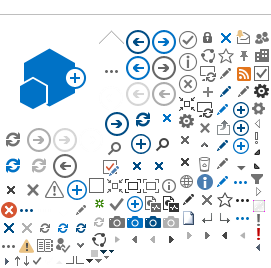The measurement, the most precise made at CERN's LHC to date and obtained by the CMS experiment, reaffirms the accuracy of the Standard Model of particle physics
In Santander, September 17, 2024
CERN has announced this morning
the most accurate measurement of the mass of the W boson to date, obtained at the LHC by the CMS experiment, which reaffirms the Standard Model of particle physics, the main theory describing nature at its most fundamental level.
“This is the first measurement of the mass of the W boson made by the CMS experiment since the LHC, the Large Hadron Accelerator at CERN, began operating”, explains
Guillelmo Gómez-Ceballos, a scientist at the Massachusetts Institute of Technology (MIT), participant in the 16th edition of the ‘Higgs Days’ held at the IFCA (CSIC - UC).
This is a very precise measurement of the mass of the W boson, 80360.2 ± 9.9 MeV (mega electron volts), and this is the most important part of the announcement, it corroborates and reaffirms the Standard Model, the model by which physics is governed to explain the simplest phenomena of nature.
Obtaining a measurement of the mass of the W boson is relevant because it is one of the messenger particles of one of the forces that govern our universe, known as the weak nuclear force, responsible for the processes that make, for example, the Sun shine or radioactivity. And in this case, according to Gómez-Ceballos, the CMS experiment “offers a measurement compatible with the Standard Model and with great precision”.
Guillemo Gómez-Ceballos and Alicia Calderón, commenting on the new mass of the W boson.
Other measurements of the W boson mass
Another experiment, Fermilab's CDF, which uses the accelerator called Tevatron, made in 2022 another measurement with a similar precision, but it differed quite a lot from the Standard Model, which caused surprise among the research community. “Therefore, it was now important to corroborate either the CDF experiment or the Standard Model,” explains the Cantabrian researcher.
On the other hand, the previous most accurate measurement inside the LHC was obtained by the ATLAS experiment, with a 50% higher accuracy. So that measurement is now surpassed by this new result obtained by the CMS experiment, which strengthens the Standard Model, “this is a great advance in both directions, both in terms of precision and reaffirmation of the Standard Model of particle physics”, concludes the Cantabrian physicist.
IFCA and its Higgs Days
Higgs Days have been bringing together the physics community in Santander for 16 years.
For this type of measurement, protons are used, which travel at high speeds through CERN's large LHC accelerator in both directions, colliding with each other. Of the hundreds of billions of collisions, we are interested in those that result in the production of W bosons, which decay into a series of different final states. In the case of CMS, only decays that give rise to a muon and a neutrino are used, the latter not detected, giving rise to missing energy in the collision,” explains Gómez-Ceballos.
Muons are particles on which the Particle Physics and Instrumentation Group of the IFCA (CSIC - UC) has been working over the years. “What we do is to select muons, a large number, millions, and with these data we can measure the mass of the W boson, very accurately. We've been working on it for 7 years, that's why it's such a long-awaited result,” says the MIT physicist.
And precisely these studies related to muons and W bosons have been addressed during the 16th edition of the 'Higgs Days', held at IFCA and attended by about 40 people from more than 15 countries.
For IFCA researcher and deputy director,
Alicia Calderón Tazón, this type of meeting “is important to bring together the theoretical community from around the world, specialists in Higgs theories, with the experimentalists”, those who study and observe the measurements and properties of the Higgs boson. “This allows us to have a framework for collaboration and discussion between theorists and experimentalists and helps us to advance our research year after year,” says the IFCA deputy director.
70 years of CERN's life
Although it was a coincidence, the announcement of the W boson mass measurement is in addition to the celebration, this Tuesday, of CERN's 70th anniversary and the work of the thousands of people who make up the European particle physics laboratory. “It is a double celebration: the 70th anniversary of CERN and the Standard Model,” says the MIT scientist.
Rebeca García / IFCA Communication
